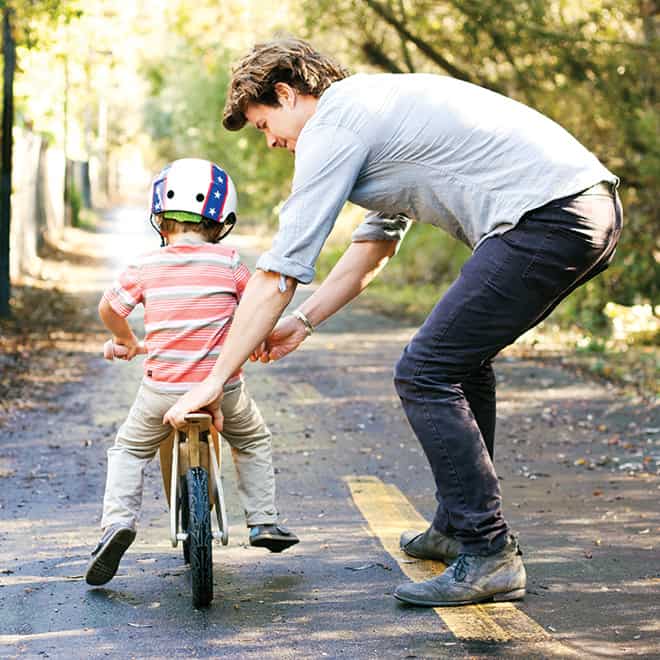Riding a bicycle is an integral part of childhood for many kids. The feeling of the wind rushing past them, the newfound independence, and the relationship between a child and her bike can be such a positive experience. But the learning process is tough, and these tips can make it a little easier for both parents and kids!
Choose a Bike
Think twice about buying a bike that is too big for your child, hoping that she’ll grow into it. This may deter her from wanting to ride it if she feels uncomfortable on an ill-fitting bike. Buy a bike that enables your child to stand over the top tube with her feet firmly planted on the ground.
Choose a Bike Helmet
Select a helmet that fits your child’s head correctly in order to maximize safety. The front of the helmet should sit evenly across your child’s forehead, about an inch above his eyebrows. Fasten it properly every time she wears it, and repair it when it goes through any major spills, is thrown too hard, or is accidentally crushed a bit.
Location, Location
You’ll want to teach your child to ride in an area that is wide and expansive, with little to no traffic and a smooth, flat, paved surface. Many families have found that visiting the parking lot of a municipal building such as a school or a town hall, before or after hours, or on the weekends, is the perfect opportunity. Tennis courts and basketball courts are also suitable.
Focus on Balance
Balance is the key to riding a bike, and can only be learned once the training wheels have come off! Many parents start their kids out on balance bikes, but you can also modify a regular bike by removing the training wheels and the pedals, and lowering the seat so that your child is able to place both feet on the ground.
Learning to Coast
Ask your child to scoot on his bike just to give him confidence and a sense of the bike’s size and its weight. Then ask him to pick up her feet occasionally, maybe for a second or two at first, but gradually build his confidence so that he is picking his feet up for longer periods of time. He’ll grow to enjoy the feeling of coasting and will be able to coast for longer intervals.
Turning and Maneuvering
Once your child is feeling comfortable coasting for long periods, you can work on turning. Place markers a wide distance from each other and focus on large, looping turns inside of tight ones. As your child gets the hang of it, you can place the markers closer together.
Pedaling the Bike
Now you can go ahead and put the pedals back on the bike and help your child to stand with one foot on the ground and the other foot on a pedal in the 2 o’clock position. When he pushes hit foot forward, the bike will move forward and he will be able to coast as it moves. Try alternating feet for a little while, until he has gotten used to it, and then encourage him to put both feet on the pedals. You can put your hand on his back to give him confidence, but make sure not to balance him yourself!
Stopping the Bike
Now that your child wants to go, go, go, make sure he knows how to stop. Teach him to press down on the brake gently, and so that he can brake slowly, but remind him to begin braking a few seconds before he needs to stop.
Did your child stumble a bit as she learned to ride her bike? What techniques helped her to learn to ride with confidence? Share what worked for your family in the comments section!

